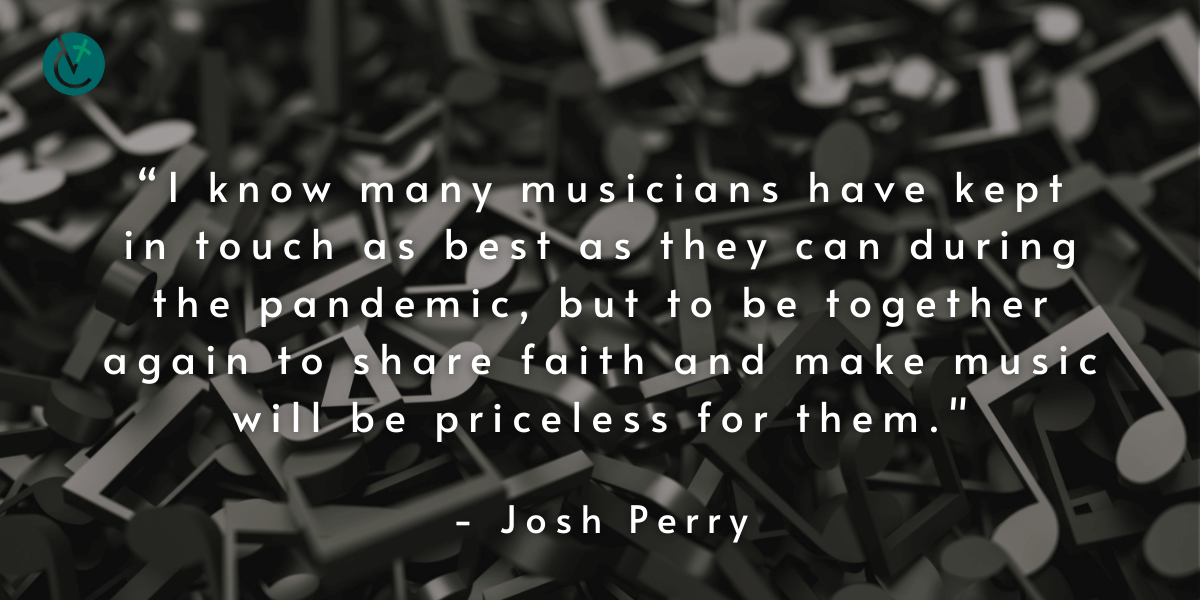
Diocese planning phased re-introduction of musicians at Mass
For more than a year, since the onset of the Covid-19 pandemic and myriad restrictions, a fully-active parish music ministry has been a missing piece of parish worship.
Now, as Covid cases decrease, assisted in part by vaccinations, there is hope on the horizon that the music and voices of parish choirs will once again be part of the liturgies.
“We are planning a phased re-introduction of musicians at Mass,” said Josh Perry, director of worship for the Diocese of Burlington. Previously, protocols allowed for one cantor and an accompanist, along with other non-wind or non-brass instrumentalists who follow pandemic protocols, such as masking, physical distancing and sanitizing.
He explained that, as of April 22, diocesan protocols were updated to allow up to five vocalists in a liturgy, as well as an unlimited number of instrumentalists, as long as the choir loft or music space accommodates a minimum of six feet from one another and members of the assembly. Vocalists must be masked when not singing, and brass and wind instruments are still disallowed in this phase.
Celia Asbell, music director for St. Joseph Cathedral in Burlington, explained, “In September we added a cantor to our Sunday Mass. We are blessed that a number of our choir members are cantors, so we have been rotating them.”
The updated diocesan protocols will allow “room for a quartet in our choir loft. We will do that for special celebrations such as Pentecost and ordinations, and continue with cantors for ordinary time,” she said, noting the cathedral also has Vietnamese, Burundian and Congolese choirs and two contemporary/folk groups.
Perry elaborated on the difficulties of restrictions, especially for those accustomed to singing with others. “Because of the restriction of only one singer at Mass, many directors or organists have just provided the music on their own, both playing and singing,” he explained, with varying amounts of music being offered.
Dr. Kevin Parizo, music director/organist at Assumption of the Blessed Virgin Mary Parish in Middlebury, observed most music directors and organists “have been able to provide solid, liturgical music for their congregations,” though “for some, playing and singing at the same time is somewhat more difficult, especially in that not all organists are comfortable singing themselves. However, most parishes, I believe, are relieved to have any music.”
Asbell said that when the assembly is able to sing together again “it will not only bring the members of the various choirs together, it will also bring the parish community closer together; I think there will be a new appreciation for community.”
A fully active music ministry, Perry stressed, is not only a blessing to the assembly. “Music ministers form close bonds with each other in providing their music ministry. Many speak fondly of their enduring friendships that extend well beyond the hour of making music at Mass, and, perhaps, the evening rehearsal during the week,” he said.
Perry said many music ministry programs provide “a sort of small faith sharing community” within a larger parish community. “I know many musicians have kept in touch as best as they can during the pandemic, but to be together again to share faith and make music will be priceless for them. At least that is my prayer.”
Parizo, whose parish choir numbers between 30 and 35 members, expects to lose a few: “My choir is fairly large and my choir loft is proportionately small, so choir members have to sit close to each other. I feel that for some members, this will present a very high level of concern.”
But he is hopeful that more information from medical experts, along with professionals in the world of vocal production, “will be able to guide all of us in what is the safest way to have choirs resume.”
— Originally published in the Summer 2020 issue of Vermont Catholic magazine.

